Bride of Frankenstein (1935)
“Science — like love — has her little surprises.”
|
Synopsis: |
|
Genres, Themes, Actors, and Directors:
Response to Peary’s Review: At any rate, Peary goes on to argue that this second film “is not cold, bleak, or depressing like the original” (apples and oranges, anybody? I find nothing wrong with the first film having more of this tone), and that it “has a higher budget [so that] the production values breathe life into the story” (though again, I found the production values just fine in the original). He notes that “the claustrophobic castle and laboratory sets are balanced by spacious, candle-lit chambers with shiny floors and columns, all covered with shadows”, and exclaims (rightfully so) over “how wonderful the expressionistic forest [is]!” As Peary points out, “neither Whale nor cameraman John Mescall strove for realism”, given that this “film is meant to be a visualization of a story”. He calls out the way Whale “has fun with the four stars’ angular faces”, shooting them “in tremendous close-ups, often using wild camera angles” — indeed, it’s this particular element of the film that strikes one as most innovative and astonishing. (“Really? He’s filming from THAT perspective?!” you’ll find yourself wondering aloud.) Peary accurately argues that the 5’4″ Lanchester is “marvelous in her brief appearance as the Bride”, walking on “2 1/2-foot stilts that make her movements birdlike” — yet despite her visual dominance in our collective consciousness of this film, she’s really a very minor character, not showing up until the very end, and on-screen for less than five minutes. Thus, Peary’s right to note that “it is Karloff’s touching performance” (as in the original) “that makes this film great.” While he’s “almost hidden beneath Jack Pearce’s remarkable make-up, his sensitive eyes still come through, expressing the Monster’s feelings”. Peary sums it up perfectly: “With Karloff in the part, the Monster is eloquent even when silent”. Just as memorable, however — and arguably an equally essential ingredient in the film’s success — is the bold performance given by Thesiger as “one of the genre’s most eccentric scoundrels”. Whenever this angular villain is on-screen, we simply can’t look away — particularly as he’s showcasing his display of miniaturized humans, each perfectly realized, and reminding one of the expert special effects work done a year later in Tod Browning’s The Devil Doll. Redeeming Qualities and Moments:
Must See? Categories
(Listed in 1001 Movies You Must See Before You Die) Links: |
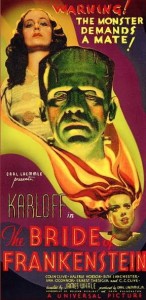
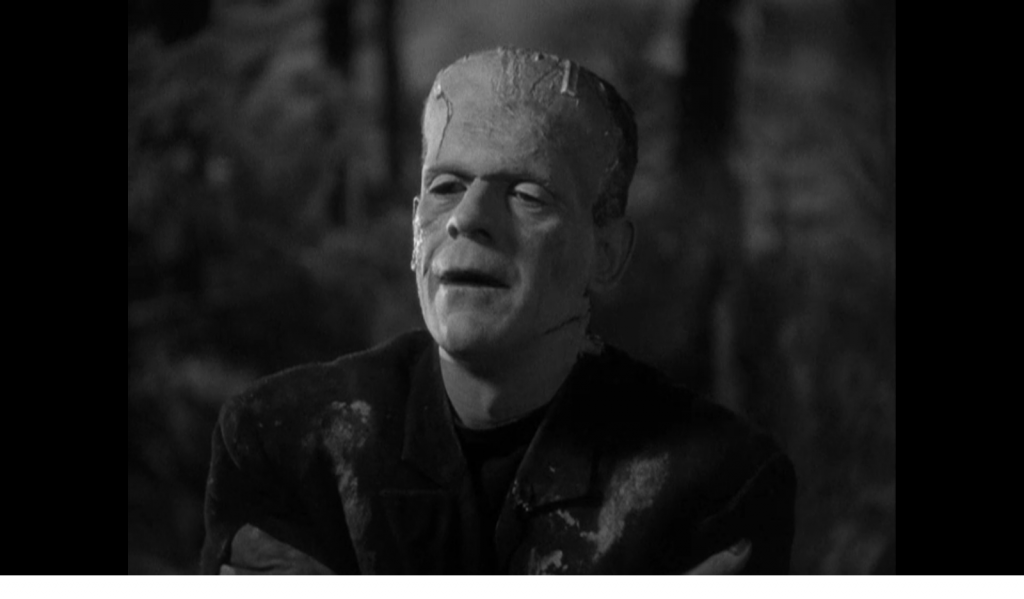
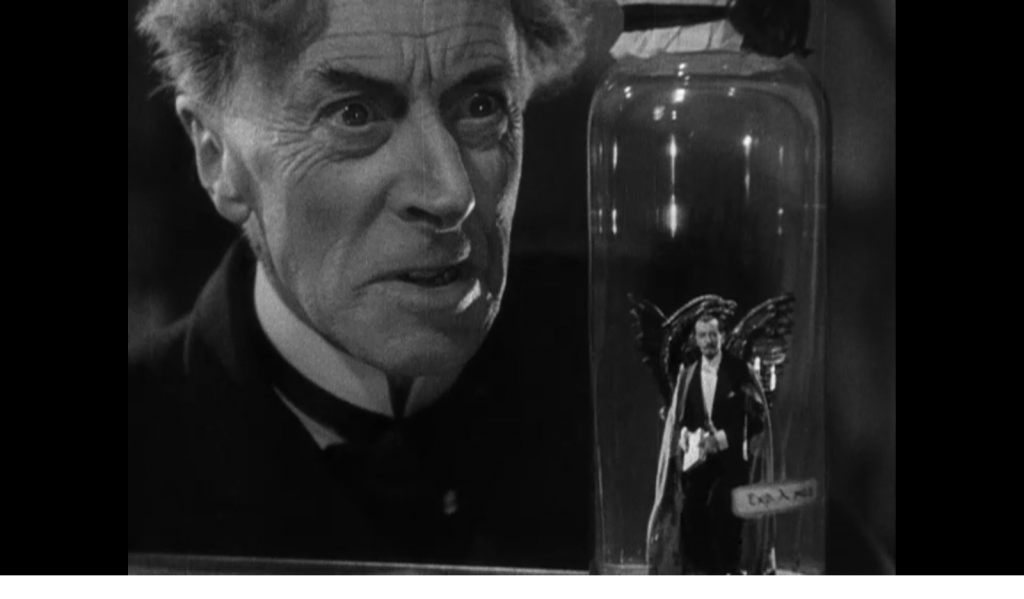
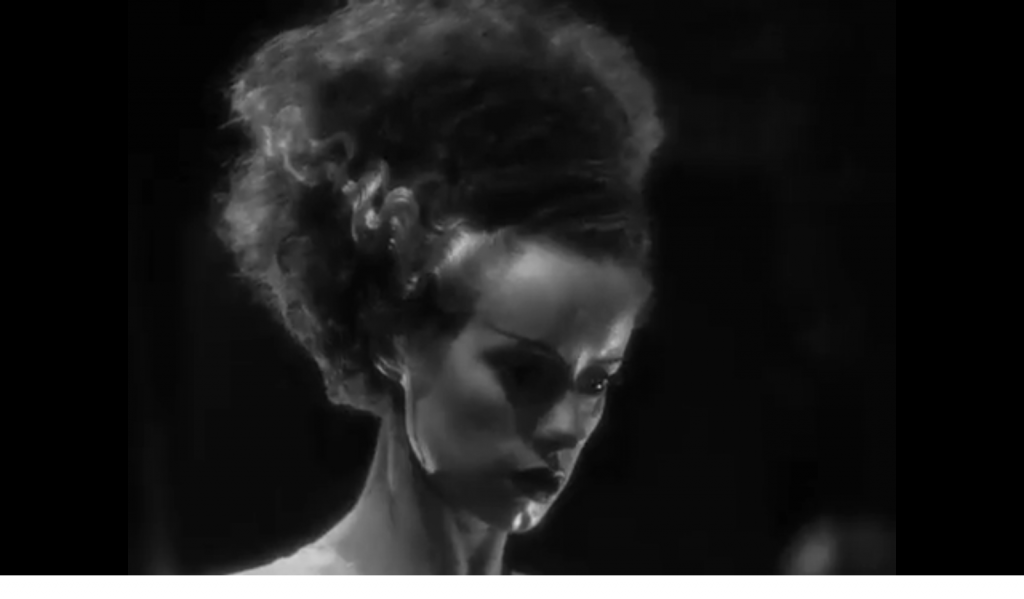
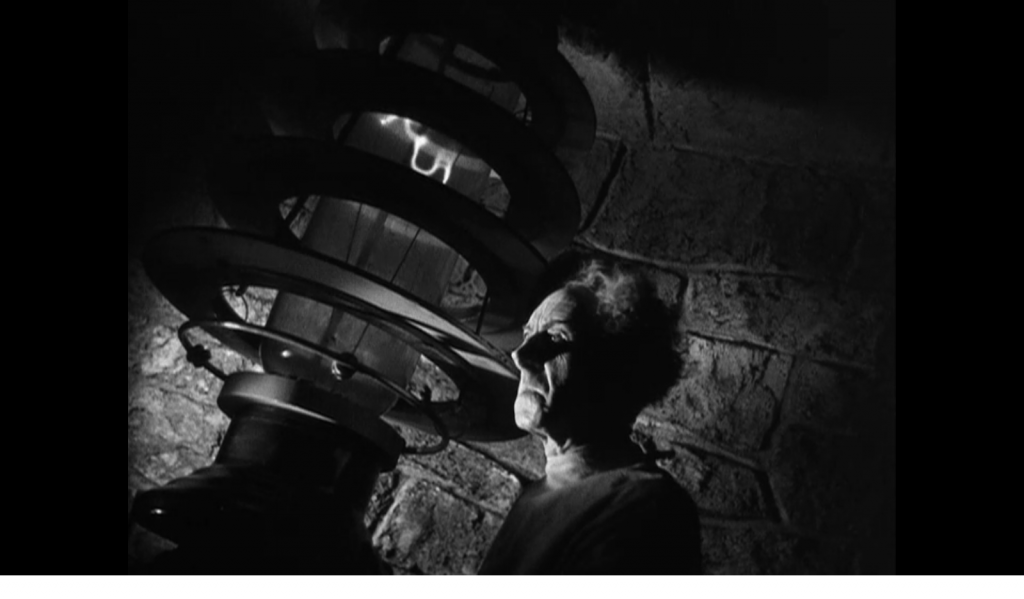


2 thoughts on “Bride of Frankenstein (1935)”
A must, of course. I will not dispute this as “one of the undisputed classics of early horror”. 😉
It was all the more pleasurable to return to ‘BOF’ having just revisited the very weak ‘Son of Frankenstein’. In ‘SOF’, just about nothing of real interest happens – and there’s approximately 25 more minutes of tepid nothingness in it, as compared to the very compact running time of ‘BOF’: a mere 74 minutes. Not only does ‘BOF’ use its time wisely, but it seems to have an endlessly creative succession of incidents. It’s a very full and satisfying piece of cinema.
I recall reading Mary Shelley’s book many years ago and found myself amazed at how the first two Frankenstein films had trivialized its content and impact. However, what James Whale accomplished in those first films at least makes for solid, gripping entertainment. (Though I do highly recommend the book – which, at any rate, is nicely referenced in this film’s opening scene as Shelley, her husband and Lord Byron discuss it.)
I wouldn’t go so far as to stamp ‘BOF’ as campy in any way, really – but it does have a strong gay sensibility (which is a different thing; a kind of harnessed camp). Whale, an out director in Hollywood at a time when being out simply wasn’t done, clearly approached his sequel with less overall reverence – having apparently decided to have more fun as a director. As a result, ‘BOF’ is often funny – in the sense that the material is being taken less seriously than that of the original ‘Frankenstein’. That said, Whale was clever and sensitive enough to know when to give a scene the respect it deserved – note that the scene involving the blind man is quite touching and not heightened for effect really at all.
The main ‘gay’ through-line of the film is afforded by the casting of Thesiger. Reportedly something of a queen in real life, Thesiger emits quite a gay glow here, gleeful as he is in his subversively dark nature. Although Thesiger’s Dr. Pretorius is evidently beyond any real sexuality, his confidence is that of a jaded homosexual who cannot be shaken, much less thrown. Note his particular sense of pride as he announces Lanchester as “the bride of Frankenstein”.
My only quibble with the otherwise strong screenplay is in the monster’s quickly growing ability at speech. He goes from learning a few simple words to having something of a real working vocabulary – when that doesn’t particularly make much sense. But, since the film works so well, that’s a small bit of beef.
cf.: ‘Gods and Monsters’ (as mentioned in my post on ‘SOF’). FFs will certainly want to check out this modern must – which enhances one’s appreciation of Whale and his work with The Monster. (The film is actually something of an improvement on Christopher Bram’s generally solid novel ‘Father of Frankenstein’.)
⭐️⭐️⭐️⭐️⭐️
Easily the best of the Universal series and a true cinema classic; everything works beautifully here.